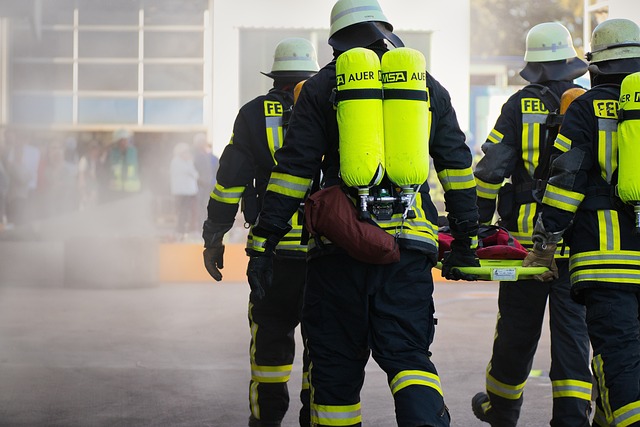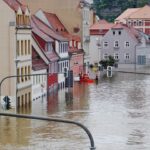
A leaking roof, burst pipes, or flooding can all result in unexpected and devastating water damage to homes, businesses, and personal belongings. Water damage restoration procedure is a complex and multifaceted process that requires a methodical approach to return affected properties to their pre-damaged state. This in-depth article explores the details of the water damage restoration procedure, going over each step in detail and providing advice on best practices for a successful recovery.
This article aims to equip homeowners, property managers, and restoration professionals with the knowledge necessary to navigate the complexities of water damage restoration effectively. Water damage restoration is more than just removing water; it involves a comprehensive strategy encompassing assessment, mitigation, and restoration. The first response to water damage can have a significant impact on the extent of the harm and the final success of the restoration process.
Table of Contents
Water Damage Restoration Procedure
I. Assessment and Inspection
1. Initial Damage Assessment
- Visual Inspection: Examine the affected areas to identify visible signs of water damage, such as discoloration, swelling, or warping.
- Moisture Detection Tools: Employ moisture meters and thermal cameras to detect hidden water pockets behind walls or ceilings.
2. Categorization of Water Damage
- Class 1: Limited damage with minimal water absorption.
- Class 2: Significant damage with a fast rate of evaporation.
- Class 3: Widespread saturation, affecting walls, ceilings, and insulation.
- Class 4: Deep water absorption requiring specialized drying techniques.
3. Damage Severity Assessment
- Primary Damage: Direct impact of water on structures and materials.
- Secondary Damage: Indirect consequences, such as mold growth, if mitigation is delayed.
II. Water Extraction and Drying
1. Water Removal
- Pump and Extraction Units: Employ pumps and vacuums to remove standing water.
- Sump Pumps: Use in basements or areas prone to flooding.
- Moisture Absorbers: Place dehumidifiers strategically to expedite drying.
2. Structural Drying
- Air Circulation: Enhance airflow to accelerate evaporation.
- Dehumidification: Control humidity levels to prevent secondary damage.
- Heat Application: Use heaters to promote drying in colder environments.
3. Salvaging Personal Belongings
- Content Assessment: Evaluate the condition of furniture, electronics, and other valuables.
- Professional Cleaning: Utilize specialized cleaning methods for salvaging items.
- Document Restoration: Address water-damaged documents promptly to minimize deterioration.
III. Mold Remediation
Mold remediation service is among the list of damage restoration services that you need when there is water damage to your property.
1. Mold Inspection
- Thorough Inspection: Identify areas conducive to mold growth.
- Sampling: Collect air and surface samples to assess mold presence and types.
2. Containment and Removal
- Containment Barriers: Isolate affected areas to prevent mold spores from spreading.
- Safe Removal: Employ industry-approved methods to eliminate mold colonies.
- Disposal: Safely dispose of contaminated materials following environmental regulations.
3. Prevention Strategies
- Humidity Control: Maintain optimal humidity levels to inhibit mold growth.
- Ventilation: Ensure proper ventilation in high-moisture areas like bathrooms and basements.
- Sealing: Seal cracks and leaks promptly to prevent water intrusion.
IV. Structural Repairs and Reconstruction
1. Structural Assessment
- Thorough Inspection: Examine the structural integrity of affected areas.
- Foundation Inspection: Check for potential damage to the foundation.
2. Repairs
- Wood Replacement: Replace damaged wooden structures promptly.
- Drywall Repairs: Address any compromised drywall or plaster.
- Roof Repairs: Seal leaks and ensure the roof’s integrity.
3. Reconstruction
- Building Code Compliance: Ensure all repairs and reconstruction meet local building codes.
- Material Matching: Choose materials that match the original structure for aesthetic consistency.
- Contractor Selection: Engage reputable contractors with experience in water damage restoration.
V. Sanitization and Deodorization
1. Cleaning and Disinfection
- Antimicrobial Treatments: Apply antimicrobial solutions to prevent bacterial growth.
- Deep Cleaning: Thoroughly clean and sanitize affected surfaces and materials.
2. Deodorization
- Odor Neutralizers: Use specialized products to eliminate lingering odors.
- Ventilation: Ensure proper airflow to dissipate odors effectively.
VI. Insurance Claims and Documentation
1. Documenting Damage
- Photographic Evidence: Take detailed photographs of the damage before and during the restoration process.
- Written Documentation: Maintain a comprehensive record of restoration activities and expenses.
2. Communicating with Insurers
- Prompt Notification: Report the incident to the insurance company promptly.
- Documentation Submission: Submit detailed documentation to support your insurance claim.
3. Understanding Coverage
- Policy Review: Thoroughly understand your insurance coverage and limitations.
- Clarification: Seek clarification from your insurer regarding any uncertainties.
VII. Ongoing Maintenance and Preparedness
You need top-notch professional cleaning services and water damage restoration services to maintain your home and stay ahead just in case water damage occurs.
1. Regular Inspections
- Periodic Checks: Schedule routine inspections for potential water damage risks.
- Appliance Maintenance: Regularly service appliances prone to leaks, such as water heaters and washing machines.
2. Emergency Preparedness
- Emergency Kits: Prepare emergency kits with essentials like flashlights, batteries, and contact information for restoration professionals.
- Family Emergency Plan: Develop a family emergency plan detailing evacuation routes and communication protocols.
3. Professional Partnerships
- Establish Relationships: Build relationships with reputable restoration and plumbing professionals.
- Pre-Approval Agreements: Consider pre-approval agreements with restoration companies for faster response times in emergencies.
Conclusion
The process of restoring a property to its pre-damaged state involves many steps that require a strategic and timely response. From the initial assessment to continuing maintenance, each step is critical, and with the help of this comprehensive guide, both professionals and non-professionals can confidently navigate the challenges of water damage restoration, ensuring a complete and successful recovery.



